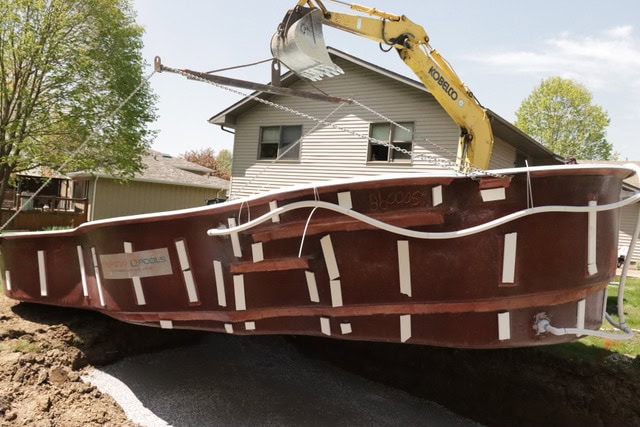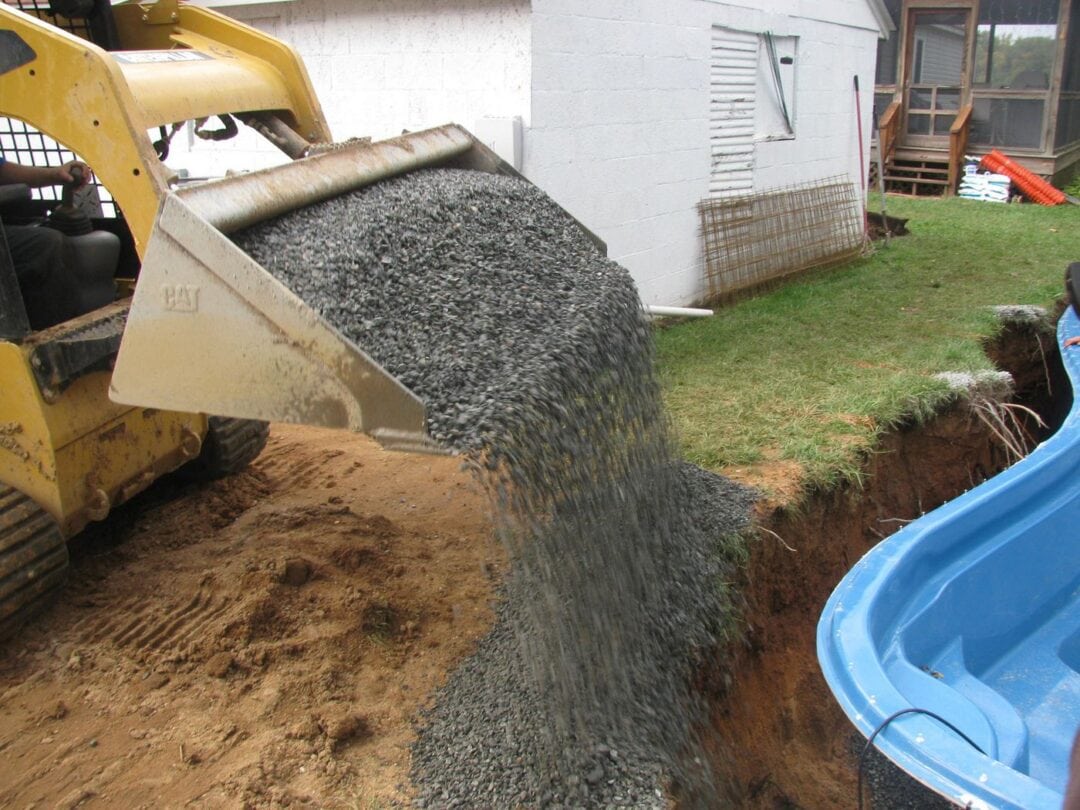Fiberglass Pool Problems: Can Fiberglass Pool Walls Bulge?

For years the common argument against fiberglass pools was that “they’re just large bathtubs… they’re not real pools.” Well, the pool industry and the market as a whole have shown us over the last several years that this is not the case. As the technology behind fiberglass pool manufacturing advances, the durability and longevity of these pools have only grown stronger. They are almost a perfect product.
Welcome back to our series on fiberglass pool problems. Today we’re talking about bulging. The truth is, yes, fiberglass pool walls can bulge, but the source of the problem is easily identifiable and avoidable.
At Royal Pools G2 Landscaping, we install fiberglass pools all summer long. For years we watched as manufacturers chipped away at perfecting the fiberglass construction process. So, what would cause one to bulge? Let’s dive in!
What Causes Fiberglass Pool Walls to Bulge?

A fiberglass pool’s walls will bulge typically for one of three reasons:
- The pool was not manufactured properly. The pool shell may have too few layers of fiberglass in the shell or perhaps a weaker resin reinforcement was used.
- The backfill material was saturated with too much water, causing the inward pressure of groundwater on the pool to outweigh the outward pressure of the pool water. This can happen as a result of using sand as a backfill material.
- The ground surrounding the pool shifted naturally, causing the earth to push against the pool wall, which could lead to bulging.
Solutions

The best way to avoid bulges developing in your fiberglass pool as a result of poor manufacturing is by purchasing a pool from a reputable fiberglass pool manufacturer that uses a strong vinyl-ester resin and industry-standard practices that will compose the strongest possible pool shell. Where can I find these manufacturers? Check out this article.
If bulging occurs as a result of the installation, it is more than likely due to the use of sand as backfill material. Backfilling fiberglass pools using sand has been done for years by dozens of installers. It doesn’t always lead to bulging, but it certainly can.
When sand gets wet, it liquifies. If the pressure from surrounding liquified sand and groundwater overpowers the pressure of the water inside the pool, the pool will bulge. To remedy this possibility, we recommend using gravel or some form of crushed stone, preferably ¾ inches.
Gravel material provides a stronger base and foundation for the pool to sit in that will not be easily moved due to shifts in the earth. Gravel doesn’t dissolve upon water contact, providing greater protection for the pool in the event of groundwater buildup.
Conclusion
As we said, no pool is without its problems. But in the case of fiberglass pool bulging, the problem can be avoided, as long as you find a reputable manufacturer and installer to get a pool from. Most manufacturers build their pools with the possibility of bulging in mind and take the necessary extra steps to ensure that the pool will remain strong and durable for years to come. Curious about the other fiberglass pool problems? Check out the articles below. For more educational content on all things pools and landscaping, check out our learning hub! Have a great day.
Why Do Fiberglass Pools Cost More Upfront?
Fiberglass Pool Problems: Gelcoat Repairs
written by Logan Edgemon
